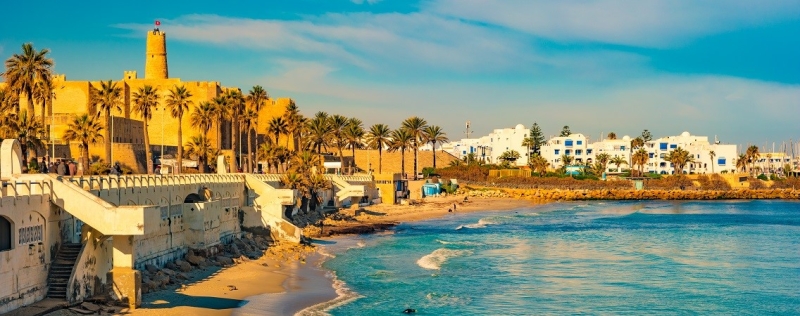
In African Tunisia, antiquity and the Middle Ages, Roman villas and troglodyte caves, desert landscapes of the legendary “Star Wars” and scenes from “Gladiator”, green oases and grandiose canyons are mixed. We tell you what to see and do in the country to diversify your beach holiday.
Entry rules
Russians can stay in Tunisia without a visa for up to 90 days. All COVID restrictions were lifted on December 1, 2022.
How to get there
There are no direct flights from Russia. You can fly with transfers in Istanbul, Algeria and Cairo. The cost of round-trip tickets from Moscow to the capital of Tunisia starts from 57,000 rubles*, from St. Petersburg – from 59,000 rubles*.
To explore all the interesting places in comfort, we recommend renting a car: public transport is rare, but the roads are generally good.
Capital Tunisia: what to see
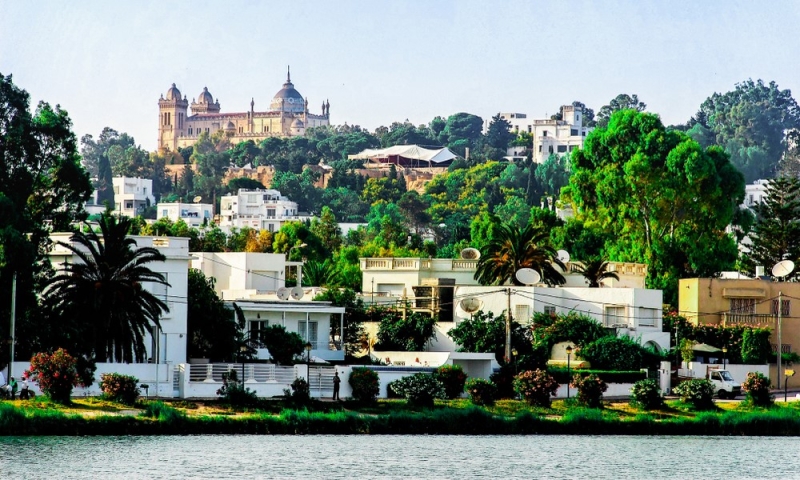
Tunisia is both the name of the state and its capital, the largest populated area in the country. Tourists are attracted by the winding quarters of El Medina, the Old City, ancient gates and the proximity of different cultures – a reflection of the complex history of these places. The oldest mosque in the capital and one of the first in Africa, Al-Zaytuna, was built in the first half of the 8th century; columns from ancient Carthage were used in its construction. The unusual square minaret, ceramic tiles and marble carvings are striking. In the Middle Ages, there was an Islamic university here with a rich library, which was burned during the Spanish Crusade led by King Charles V. And a ten-minute walk from the mosque stands the majestic Cathedral of St. Vincent de Paul – a reminder of the French colonial past.
To understand the intricacies of Phoenician, Roman, Christian and Muslim cultures, visit the Bardo Museum in the suburbs of the capital. In addition to the admirable decorative decoration of the 13th-century palace, the exhibition features a magnificent collection of ancient Roman and Byzantine mosaics. You can see finds from the Punic period, the antiquity of Carthage and artifacts of the Mahdia shipwreck that occurred in the 1st century BC – they were raised from the bottom of the sea by the team of Jacques Cousteau.   ;
Where to stay: at the Dar Ya bed and breakfast hotel from 4,000 rubles* per room, at the four-star Palais Bayram hotel from 7 400 rubles* per night or in the guest house El Patio Courtyard House from 4,600 rubles* per night.
Can’t miss: Ruins of Carthage
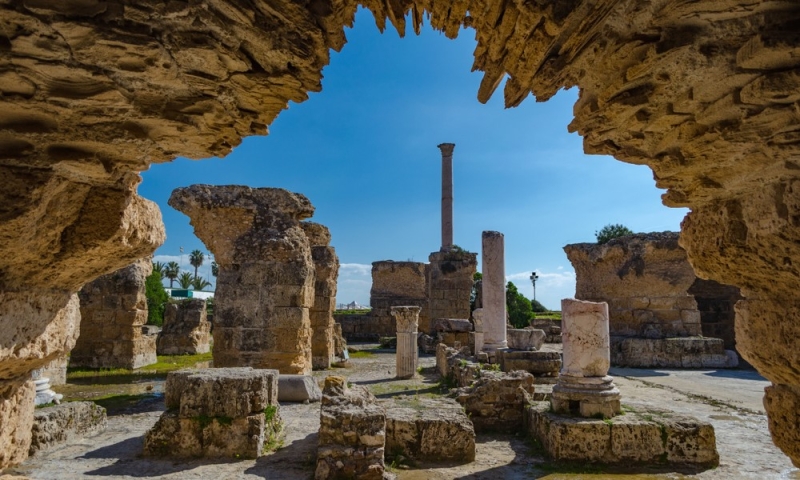
The ruins of Phoenician Carthage in the suburbs of Tunisia are a place not to be missed. The city arose in 814 BC, and it is difficult to even imagine what these dusty stones have seen over the past millennia. People go to excavations to get to know the history of antiquity firsthand: walk through the so-called quarter of the commander Hannibal, sit on the steps of a huge theater, wander through the Colosseum arena and Roman villas with preserved mosaics, unravel the secrets of the Tophet sanctuary, see the Baths of Anthony Pius and cisterns similar to those in Istanbul.
It is worth visiting the archaeological museum on Byrsa Hill and looking for traces of Phoenician civilization, including marble sarcophagi, ceramics and amulets of the Egyptian gods Isis and Osiris. Few artifacts have survived: the Romans, who conquered Carthage in 146 BC, razed the once prosperous city to the ground. The exhibition also features a collection of Roman and early Christian mosaics, including the famous “Lady of Carthage”. The museum is currently under reconstruction, but you can view the exhibits in the open air. Nearby, the Cathedral of St. Louis IX in the Byzantine-Moorish style of the late 19th century is interesting. It recalls the era of the Crusades: it is a monument to the French king who died during the siege of Tunisia in the 13th century.
Sidi Bou Said: Tunisian Santorini
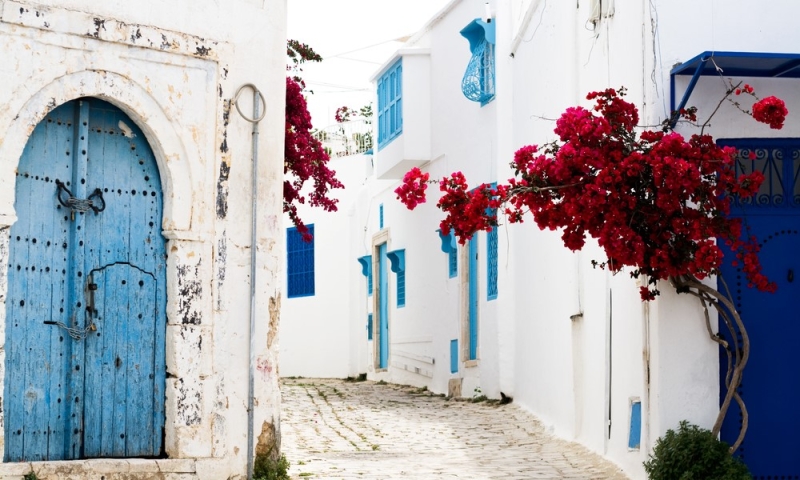
It is convenient to combine sightseeing in Carthage with a walk through the dazzling blue and white town of Sidi Bou Said overlooking the Mediterranean Sea. For its bright Andalusian-style houses and cobbled streets running into the blue, it is called the Tunisian Santorini. The city owes its picturesque view to Baron d’Erlanger: the Frenchman built a villa on the hillside, the doors, shutters and windows of which were painted blue. Following his example, residents began to adhere to a given color scheme, and subsequently the baron completely achieved a ban on the use of other colors. The villa is accessible for inspection and amazes with the craftsmanship of finishing hidden behind the outwardly modest design.
Ethnography lovers will love Dar el-Annabi, a private museum in a traditional house with wax figures in national dress and a viewing platform on the roof. Another popular way to spend a couple of hours in Sidi Bou Said is to wander aimlessly through the colorful streets and viewpoints, looking at the ornaments of doors, popping into craft and art shops with ceramics, paintings and handicrafts, and drinking mint tea on the terrace of a restaurant or coffee shop.
El Jem: the arena where Gladiator was filmed
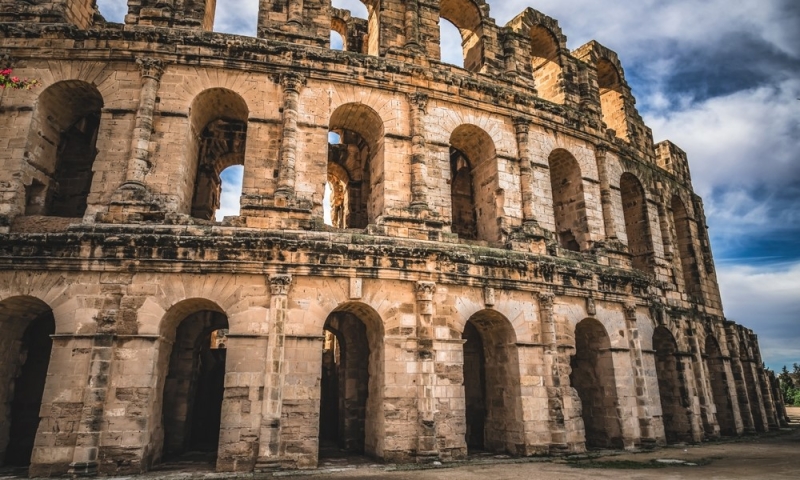
The city of El-Jem, 200 km from the capital, is famous for its huge Roman amphitheater of the 3rd century AD. At the time of construction, it was the fourth largest in the empire, after the coliseums in Rome, Capua and Verona: 30,000 people could watch gladiatorial fights or chariot races here. The object is well preserved and is protected by UNESCO World Heritage Site, which did not stop directors of historical films from using it as a film set: Ridley Scott filmed the Oscar-winning Gladiator in this arena. You can see not only the amphitheater itself and the upper tiers, but also the underground rooms and catacombs.
A ten-minute walk from the Colosseum is the archaeological museum, notable for its collection of magnificent mosaic panels from the 2nd–3rd centuries. The Roman Villa “Africa” was also restored on the territory of the museum – it’s interesting to see how the life of the patricians was structured.
Oasis of Chebika: real Uchkuduk
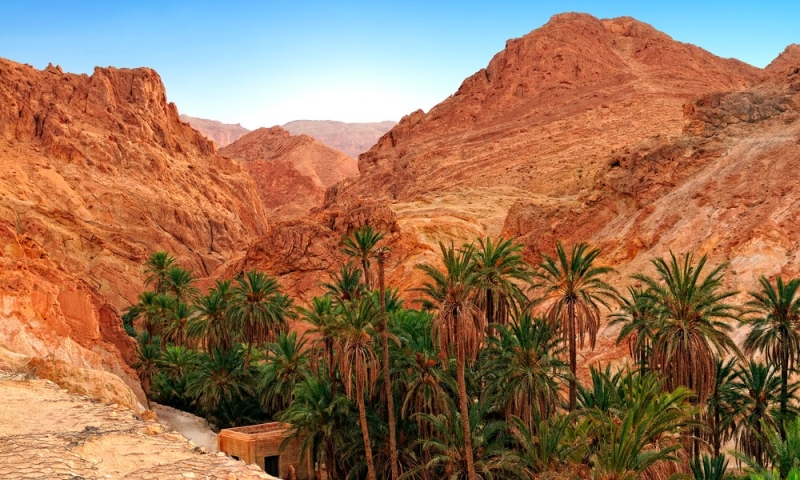
If as a child you were haunted by the lines from the song “Uchkuduk – Three Wells,” take a look at the Chebika oasis. A six-hour drive from the capital, among the sands of the great Sahara desert and the spurs of Mount Jebel el-Negub, lies a green island with date palms, a turquoise lake and a small waterfall. In ancient times, the oasis served as a starting point for caravans crossing the Sahara. Cinema connoisseurs will find the landscape familiar: episodes of “Star Wars” and “The English Patient” were filmed here.
If you drive about 20 km more towards the Algerian border, you will see the less visited oasis of Mides, and immediately behind it is the grandiose canyon of the same name, which is deservedly called the “Tunisian Colorado”. There are few tourists here, but the views are breathtaking.
Gates of the Sahara: the city of Douz
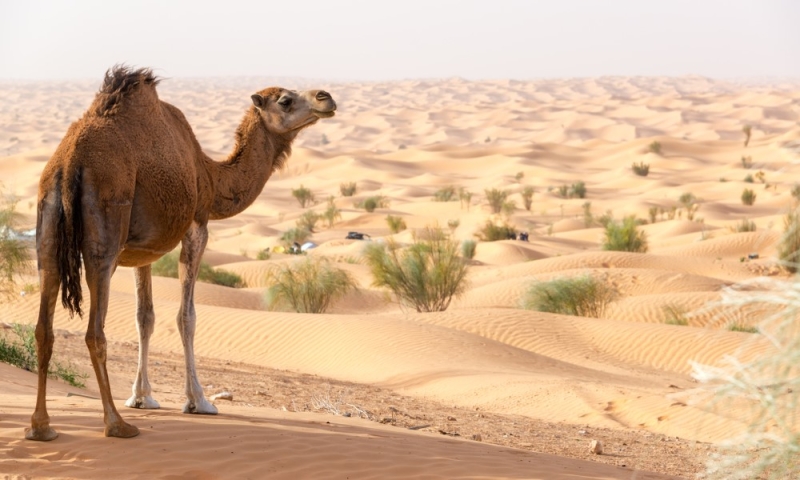
Douz is called the gates of the Sahara: its outskirts are scorched by the hot breath of the great desert. Then there are only sand dunes, sand dancing under your feet, camels and a starry sky that is difficult for a city dweller to imagine. To understand how Bedouins and camels survive in the largest hot desert, first take a look at the Sahara Museum, and then go on a tour. Its duration – from an hour walk to a three-day tour – depends only on you. You can move around the desert on a camel, jeep or motorcycle. There are a variety of campsites around Douz, from modest to almost luxurious: stay overnight to enjoy sunset and sunrise with incredible scenery, experience local life, try astrophotography or hang glider over the dunes.
Visiting the troglodytes: the cave city of Matmata
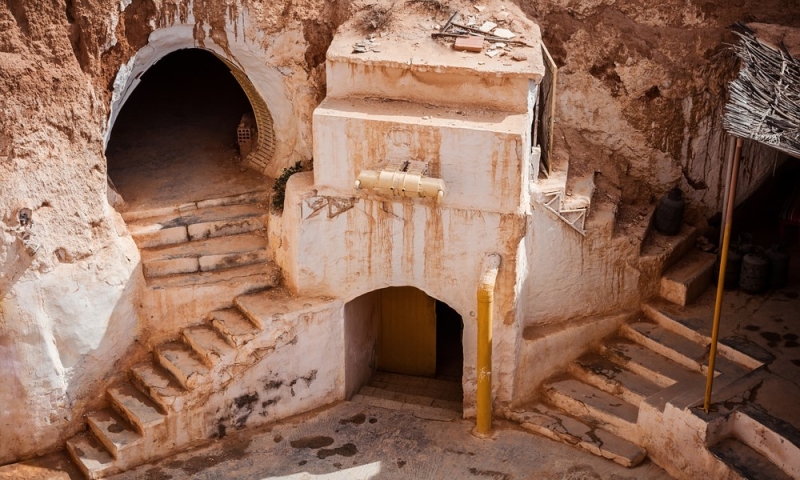
Troglodytes still live in Africa, as the ancient Greeks called cave dwellers. Local Berber tribes, fearing invaders, have long settled in grottoes carved out of malleable limestone or formed naturally. The most famous cave settlement in Tunisia is the city of Matmata. Half a century ago, heavy rains partially flooded and destroyed it, forcing residents to leave the caves, but some of the traditional houses with carefully whitewashed facades are still inhabited and available for inspection. Tourists are invited to descend into the craters, get acquainted with simple life and treat themselves to freshly baked flatbread with honey and olive oil. And fans of George Lucas’ films will recognize the landscapes of the planet Tatooine from the star saga and the view of Luke Skywalker’s home – today it is the Sidi Idriss Hotel.
Ancient fortress on the top: Shenini village
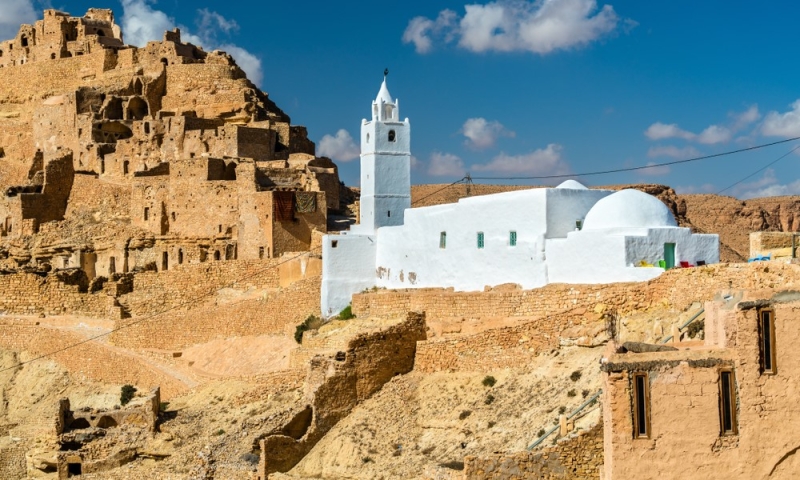
If you want to explore an authentic 12th-century Berber fortress, head to the village of Chenini, located near the town of Tatawin. The main point of attraction is the ksar (a special type of Berbe village) on the top of the hill, an outstanding monument of local architecture. They were originally built to store the tribe’s food supplies, mainly grain and olives. Gradually, in the courtyard of the fortified warehouse-fortress, general prayers began to be held, markets were set up, and trading shops and dwellings, called corrugations, were organized. Part of the fortress is still used today as granaries. Local guides will be happy to show you traditional residential caves and tell legends about the spectacular snow-white Mosque of the Seven Sleepers.
*Prices are current at the time of publication.

